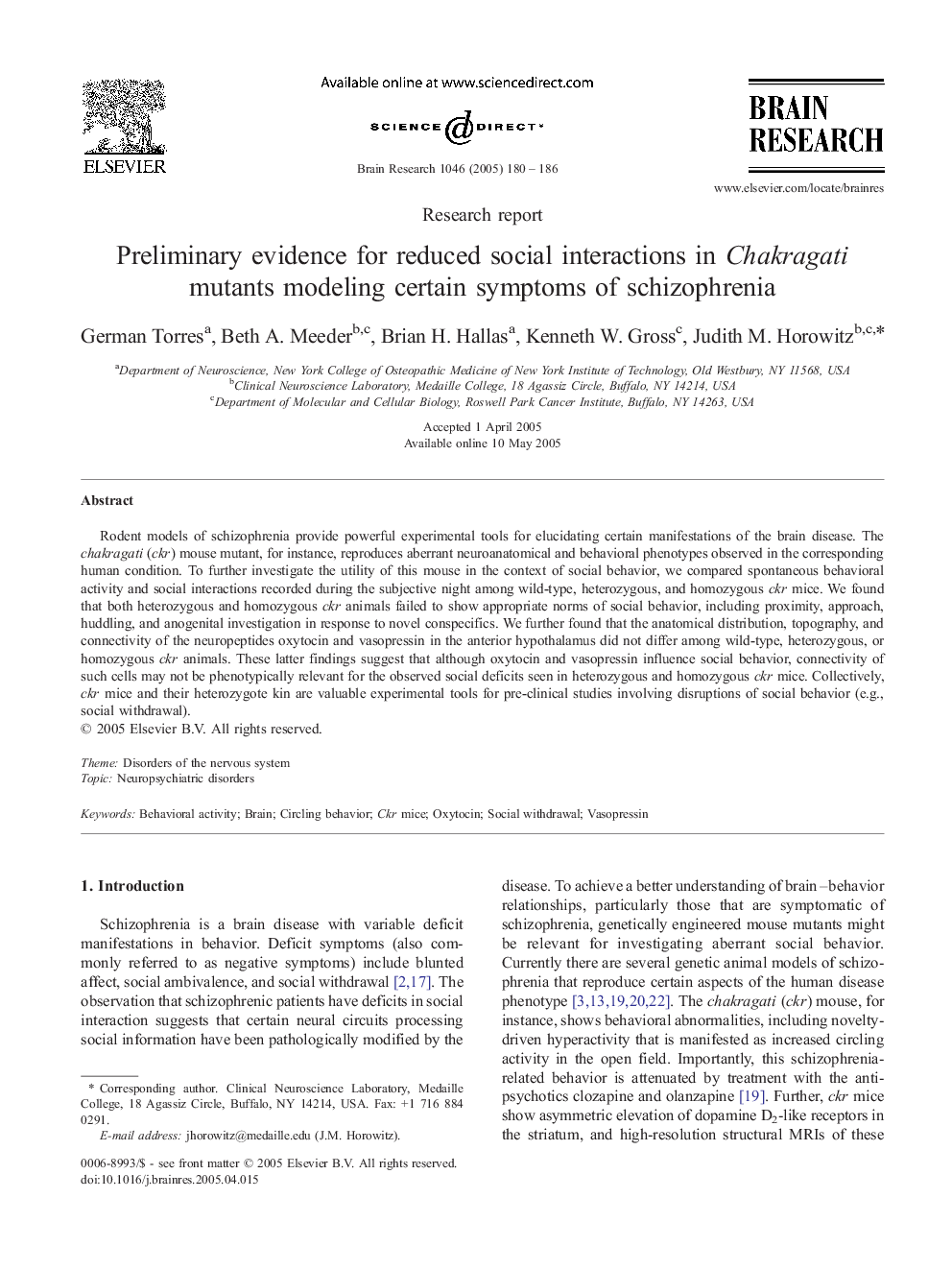| Article ID | Journal | Published Year | Pages | File Type |
|---|---|---|---|---|
| 9416351 | Brain Research | 2005 | 7 Pages |
Abstract
Rodent models of schizophrenia provide powerful experimental tools for elucidating certain manifestations of the brain disease. The chakragati (ckr) mouse mutant, for instance, reproduces aberrant neuroanatomical and behavioral phenotypes observed in the corresponding human condition. To further investigate the utility of this mouse in the context of social behavior, we compared spontaneous behavioral activity and social interactions recorded during the subjective night among wild-type, heterozygous, and homozygous ckr mice. We found that both heterozygous and homozygous ckr animals failed to show appropriate norms of social behavior, including proximity, approach, huddling, and anogenital investigation in response to novel conspecifics. We further found that the anatomical distribution, topography, and connectivity of the neuropeptides oxytocin and vasopressin in the anterior hypothalamus did not differ among wild-type, heterozygous, or homozygous ckr animals. These latter findings suggest that although oxytocin and vasopressin influence social behavior, connectivity of such cells may not be phenotypically relevant for the observed social deficits seen in heterozygous and homozygous ckr mice. Collectively, ckr mice and their heterozygote kin are valuable experimental tools for pre-clinical studies involving disruptions of social behavior (e.g., social withdrawal).
Keywords
Related Topics
Life Sciences
Neuroscience
Neuroscience (General)
Authors
German Torres, Beth A. Meeder, Brian H. Hallas, Kenneth W. Gross, Judith M. Horowitz,
